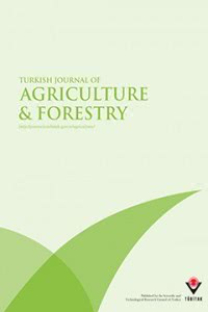Bending moment capacity of simple and haunched mortise and tenon furniture joints under tension and compression loads
Key words: Bending moment capacity, haunched, furniture joints, mortise and tenon joints
Bending moment capacity of simple and haunched mortise and tenon furniture joints under tension and compression loads
___
- Barboutis I, Meliddides T (2011). Influence of the time between machining and assembly of mortise and tenon joints on tension strength of T-type joints. Ann WULS-SGGW For Wood Technology 73: 23–29.
- Derikvand M, Smardzewski J, Ebrahimi G, Dalvand M, Maleki S (2013). Withdrawal force capacity of mortise and loose tenon T-type furniture joints. Turk J Agric For 37: 377–384.
- Dupont W (1963). Rationalization of Glued Joints in the Woodworking Industry. Modern Holzverarbeitung No. 30.
- Eckelman CA (2003). Textbook of Product Engineering and Strength Design of Furniture. West Lafayette, IN, USA: Purdue University Press.
- Eckelman CA, Erdil Y, Haviarova E (2006). Effect of shoulders on bending moment capacity of round mortise and tenon joints. Forest Prod J 56: 82–86.
- Eckelman C, Haviarova E, Erdil Y, Tankut A, Akcay H, Denzili N (2004). Bending moment capacity of round mortise and tenon furniture joints. Forest Prod J 54: 192–197.
- Eckelman CA, Lin FC (1997). Bending strength of corner joints constructed with injection-molded splines. Forest Prod J 47: 89–
- Erdil Y (2005). Bending moment capacity of rectangular mortise and tenon furniture joints. Forest Prod J 55: 209–213.
- Ishii M, Miyajima H (1981). Comparison of performance of wooden chair joints. Res Bulletin of the College of Experimental Forest. Hokkaido Uni 38: 121–138.
- Mihailescu T (2001). An investigation of the performance of mortise and tenon joints using the finite element methods. J Institute Wood Sci 15: 5.
- Tankut AN, Tankut N (2005). The effects of joint forms (shape) and dimensions on the strengths of mortise and tenon joints. Turk J Agric For 29: 493–498.
- Tankut N (2007). The effect of adhesive type and bond line thickness on the strength of mortise and tenon joints. Int J Adhes Adhes 27: 493–498.
- ISSN: 1300-011X
- Yayın Aralığı: 6
- Yayıncı: TÜBİTAK
Javane OKTAEE, Ghanbar EBRAHIMI, Mohammad LAYEGHI, Mohammad GHOFRANI, Carl Albert ECKELMAN
Batoul N. AL-HAWIJA, Viktoria WAGNER, Isabell HENSEN
Otakar ROP, Sezai ERCİŞLİ, Jiri MLCEK, Tunde JURIKOVA, İgnac HOZA
Muhammad Ahsan KHAN, Muhammad Dildar GOGI, Muhammad Hamid BASHIR
Ayfer ALKAN TORUN, Yıldız AKA KAÇAR, Belgin BİÇEN, Nazife ERDEM, Sedat SERÇE
Ayfer TORUN ALKAN, Yıldız KAÇAR AKA, Belgin BİÇEN, Sedat SERÇE, Nazife ERDEM
